Kim’s Gluten Free Multigrain Bread Flour Blend can be used with any of my bread recipes to create a healthier multigrain bread.
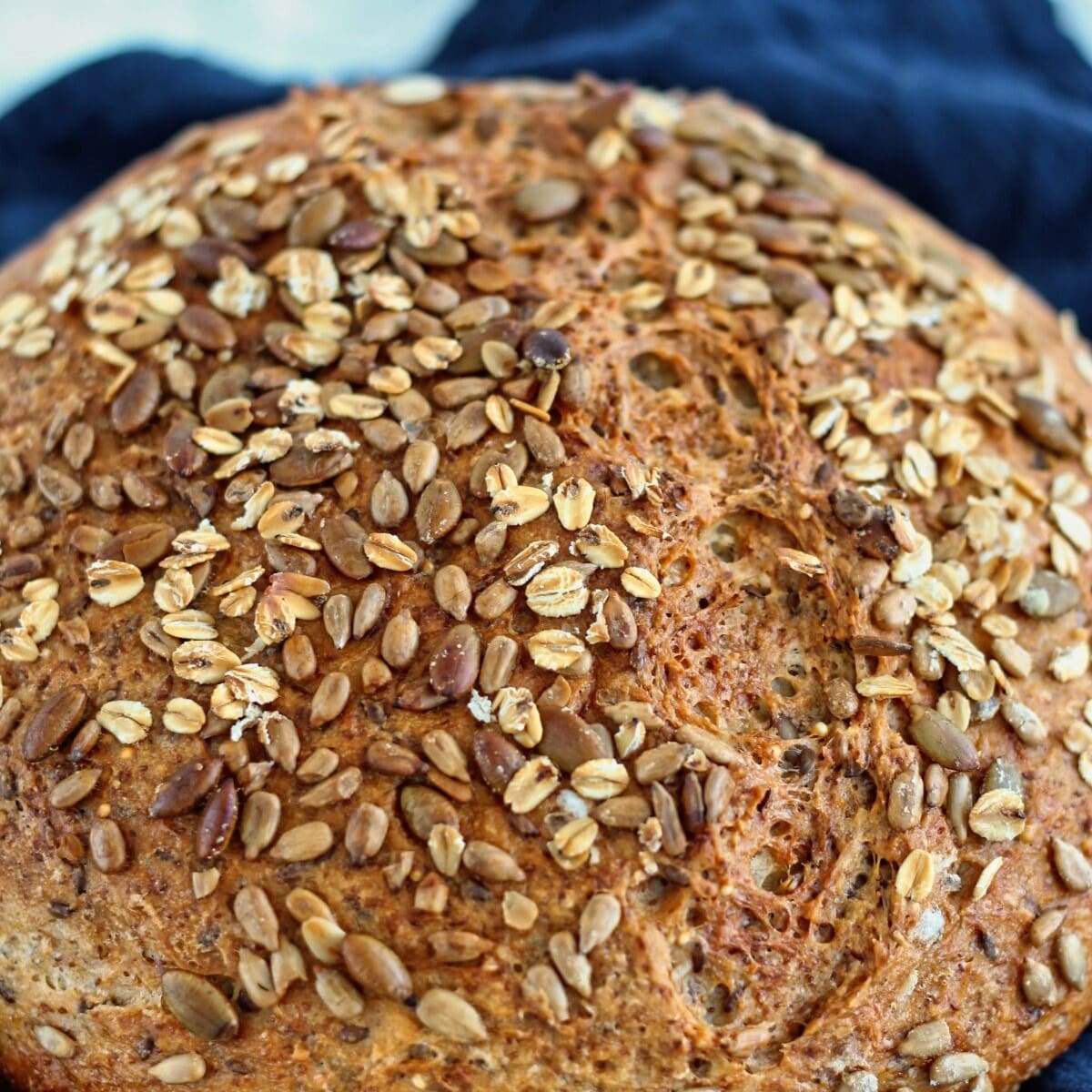
I always wanted to create a multigrain flour blend that could be used as a substitute for my gf bread flour blend in any of my recipes. And I tried. And tried. For literally years. I never could get it just right. Until now.
Bread made with this multigrain flour blend is just as good, if not better, than bread made with not only my bread flour blend, but pretty much ANY bread! Meaning, you'll never know it's gluten free.
Here's What You'll Need
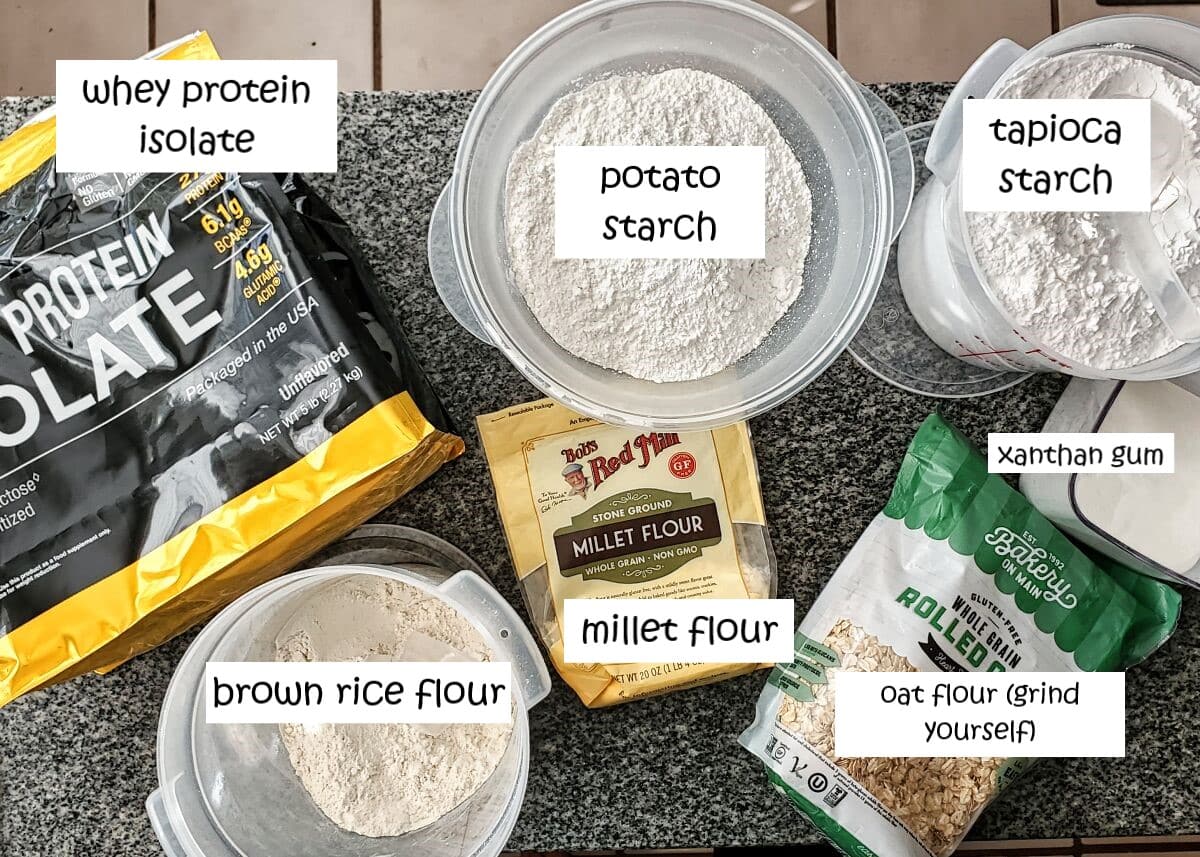
- Potato starch--I tried to make this blend with no starches whatsoever, but it kept failing. As soon as I added in just a bit of starch, I had the perfect bread. The starch is necessary in this recipe.
- Oat flour--there are substitutions below for those who can't have oats.
- Millet flour--millet flour has a very mild taste and it helps to add tenderness to baked goods.
- Brown rice flour--this is in lieu of using white rice flour. Make sure this is superfine or ultrafine brown rice flour. Gritty flours don't work the same.
- Tapioca starch--another starch is needed to bring it all together.
- Whey protein isolate--this is also required for the proper texture of the bread as it replaces the protein that is gluten.
- Xanthan gum--a little bit of xanthan gum goes a long way to bind everything together.
How to Make Gluten Free Multigrain Flour
Are you ready for this? Here's all the steps you need to do to make this flour blend: weigh each one into a large container, put the airtight lid on, and shake it all about! Remove the lid, give it a good whisk, and you've just made multigrain flour. It's that easy!
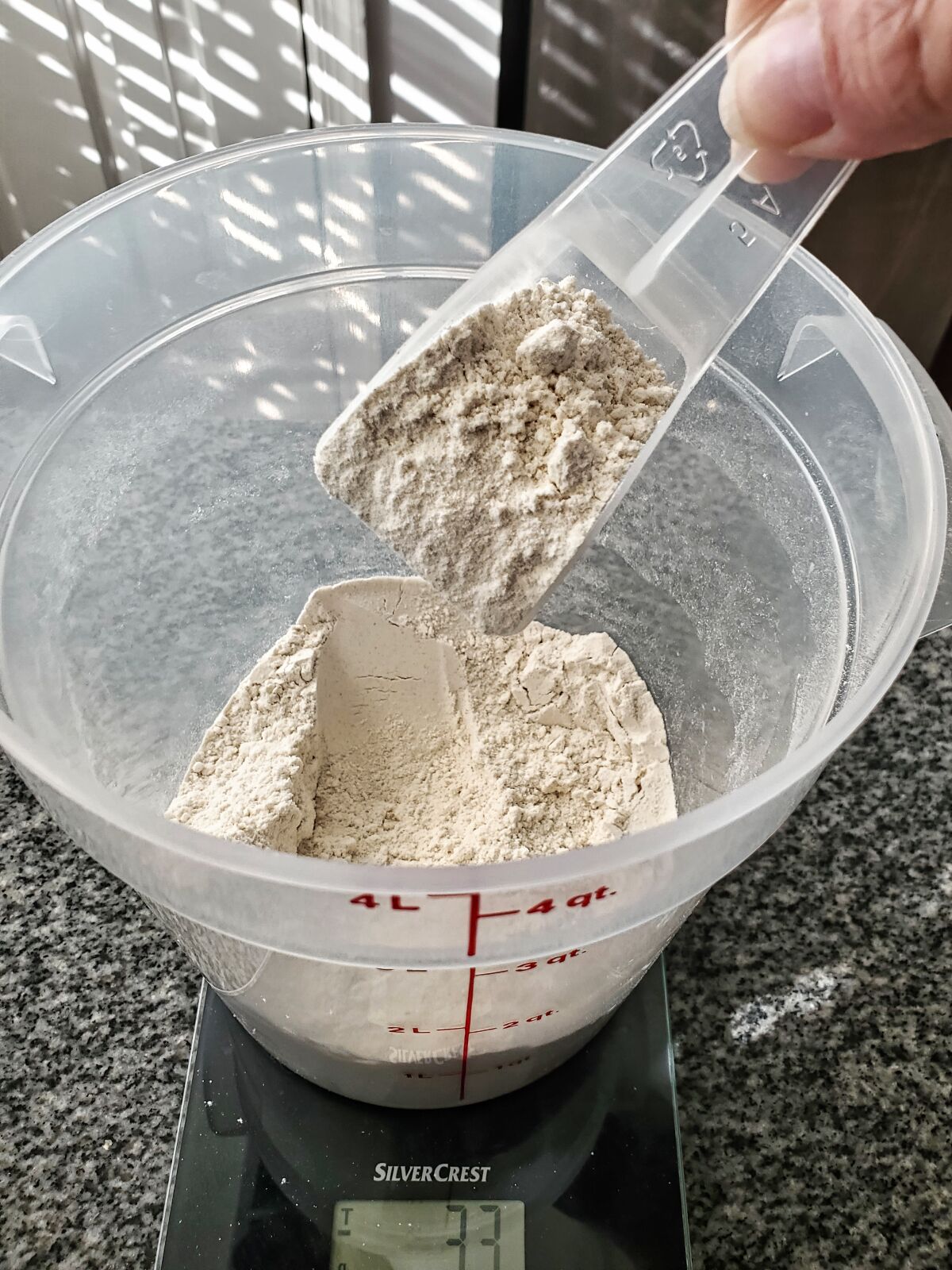
What Recipes Can Multigrain Flour Blend Be Used In?
I have tested this multigrain flour blend in three different recipes so far and it worked beautifully in all three! I made a sourdough boule with dried cranberries and walnuts. It was one of the best tasting and wonderful loaves of bread I’ve ever had! Another recipe I tested was for pillowy soft gluten free dinner rolls. Instead of making rolls, I baked the dough in a loaf pan. It made a nice, soft and plush pillowy loaf of multigrain bread. The third recipe I tested is my multigrain seeded bread that I created especially for this blend. It is by far one of my most favorite loaves of bread ever. AND, it’s loaded with good-for-you healthy additions, lots of flavors and textures, that elevate it to NEXT LEVEL!!
Based on my testing, I feel confident that this multigrain flour blend will work in any of my bread recipes. But I will be testing each recipe to make sure this is the case. I will, of course, keep you all apprised of my findings as they are found.
Why is This Flour Blend in Grams and Not Cups?
I developed my blends in grams because it’s so much more precise AND unbelievably easy to weigh ingredients than to measure by volume. My blends don’t translate very well to cups. I sure don’t have an 18th of a cup measurement, do you? I strongly suggest you invest in a scale (they’re very cheap) and weigh your ingredients–you’d be surprised at how easy it is and you’ll most likely never switch back.
Substitutions
- For dairy free protein, you can TRY soy protein, hemp protein, pea protein, egg white protein, pumpkin protein, vegan protein (clickable links) or any other pure (ISOLATE) protein powder. Please note, however, that these are all simply suggestions. My bread flour blend works best if there are NO substitutions, but I do understand that some of you may have other allergies. I wish I was a guru of all other food aversions, but I admit I am very challenged when it comes to others. The only one I’m well versed in is gluten free. I’ve heard from many readers who stated pea protein doesn’t work, while others have stated that it works fine. Some stated hemp protein worked beautifully (giving the finished bread a light green hue). One reader stated that a product that combines pea and quinoa protein worked beautifully for her. However, I DID try this product and did NOT get the usual rise and texture to my breads. In fact, they were very flat and inedible and not up to the standards that I’m used to in my recipes, so I won’t recommend that.
- For the oat flour, you should be able to substitute sorghum flour or white teff flour with little to no difference. You may even be able to substitute buckwheat flour.
- For the millet flour, you could try substituting with sorghum, quinoa, or amaranth flour.
- For the xanthan gum, this is a difficult one to substitute because it’s very unique in its qualities. However, you are welcome to try guar gum. I have never tried guar gum so I don’t know how it will react as a sub.
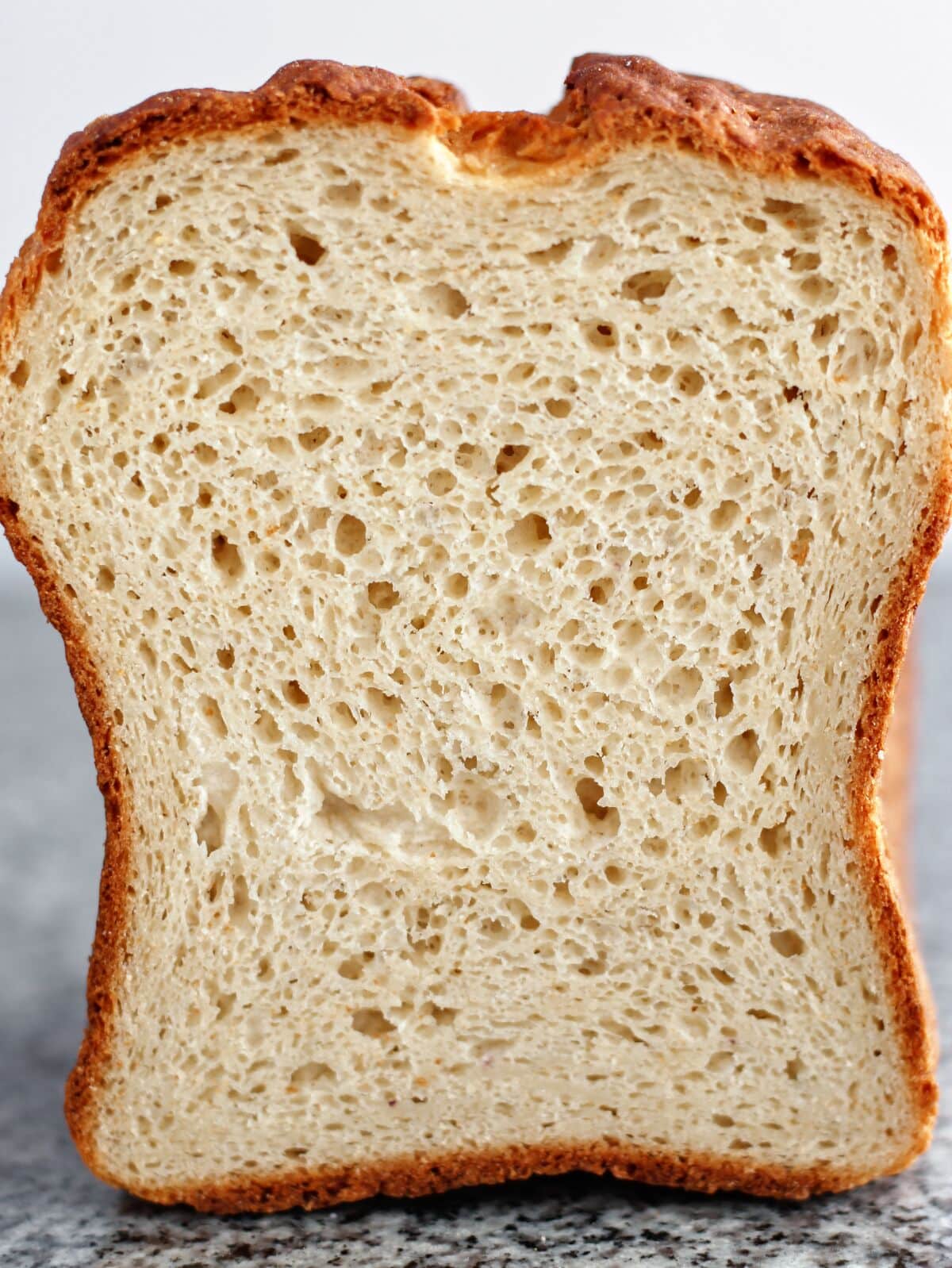
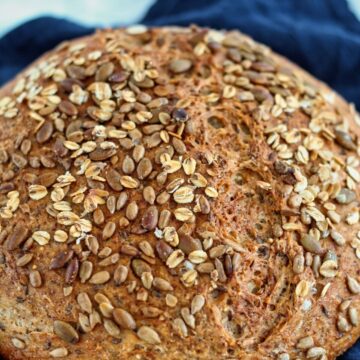
Kim's Gluten Free Multigrain Flour Blend
Ingredients
- 100 grams potato starch
- 100 grams oat flour
- 85 grams millet flour
- 250 grams brown rice flour
- 75 grams tapioca starch
- 75 grams weigh protein isolate
- 15 grams xanthan gum
Instructions
- Weigh all ingredients into a large airtight container, add the lid, and shake it up several times, in all directions. Remove the lid and give it a good whisk.
- For larger quantities, simply slide the servings slider to the right until the proper amount is reached. I always make 2.8kg (20 cups).
- Flour blend will keep in a tightly sealed container in a dark, cool closet or pantry for up to three months

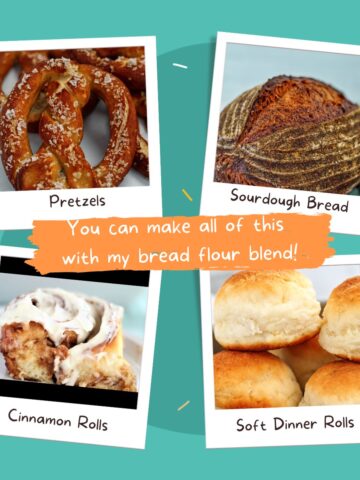
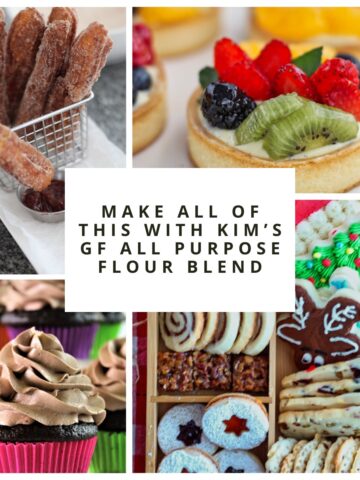
cheryl
Hello, do you have a vegan GF bread flour blend? I need a substitution for the whey protein powder. Would hemp protein work? Thanks, Cheryl
Kim
Hi, Cheryl! Please read through the bread flour blend post. You will find a whole section on substitutions 🙂
Mette
Can I even use the multigrain blend in your renewed puff pastry recipe? Have you tried? I really like the taste of oat flour, so I generally lean towards your multigrain blend when I bake from your recipes.
Kim
I have not tested the multigrain flour for the puff pastry recipe. That one would probably be a little more temperamental and not likely work as well.
Michelle Mentzer
Cheers! I am sure there is a recipe for Multigrain WITHOUT seeds on your website, but I cannot locate it. I assume that simply leaving the seeds out for a multigrain bread, would change the ratio of ingredients.
Can you please point me to your recipe of simply wholegrain bread using your multigrain flour mix?
Kim
I actually don't have a simple one just yet. I'm sorry! But you can sub the wholegrain flour blend in ANY of my recipes requiring the regular bread flour blend (artisan bread, sourdough bread, you name it)!
Maria
Hi Kim, can I use this flour blend for your sweet recipes? Thanks
jan anderson
Hi Kim, I'm currently trying out different GF flour blends and your multi-grain blend looks good to me as I really do prefer that type of bread blend. I'm wondering if either "dry milk powder" (which I already use for some bread recipes) or Bulletproof brand "protein powder" (which I already use for drinks) would be a valid substitution. It *seems* like it might be to my somewhat inexperienced eyes, but I really don't know.
What is the specific ingredient in your 'whey protein isolate' that you use for this recipe to work?
(btw, it is listed as "weigh protein isolate" above; darn autocorrect)
Thank you. jan
Kim
Hi! I'm not sure about the bulletproof protein powder. Is it pure protein? Protein is the specific ingredient in whey protein isolate that provides that missing link from all other blends. Gluten is protein found in regular wheat-based flour, so by adding the protein into my flour blend it actually mimics wheat flour to an extent. Dry milk powder would not work as a substitute.
jan anderson
Thanks for your thoughts, Kim. [Bulletproof is a collagen protein powder, lacks 1 amino acid, has 19g Pro.] I realize now that, though the nonfat dry powdered milk is protein (to increase the protein in the flour) AND I do currently add it to bread recipes, it has only 7g protein compared to the whey protein isolate. I guess I will consider the higher protein content of your suggestion. I am hesitant because of the cost (~$28/1.2#!). Thank you!
Kim
Yes, the cost is high but it actually lasts a long time. I go through a 5 lb container of it in no less than six months (sometimes longer). And I'm doing a LOT of baking.
Multigrain flour
Multigrain flour has become a staple in my kitchen. Its balanced mix of grains gives my baked goods a richer taste and a lovely, rustic appearance that I absolutely adore.
Multigrain Flour
Adeel
Multigrain flour is the heart of my healthy kitchen – a secret ingredient that transforms every dish. From pancakes to bread, its diverse grains contribute to both taste and nutrition, making it an essential pantry staple.
Goldtreemillers
MiMi McGee
I am about to try this with a starter I have picked up from CIH. I need it to be dairy free. Any subs for whey protein isolate? Can a pea protein work or some other vegan protein powder?
Thanks!
Kim
Please see the substitution suggestions within the recipe post above the recipe card.
Helen Harris
Hi Kim - random questions as I’m waiting for my dough to rise. Do you ever bake your breads using convection? And what temperature is your proofing area? My oven has a bread proof setting that is 100°; but I’ve always thought that is too high. I live in Florida so my house is almost always air conditioned to about 77°ish. My multi seed loaf is taking a long time to get puffy on the 2nd rise, so was wondering about that. Thanks!
Ren
I’ve got the same questions, Helen! Did Kim grt back to you? Would love to know!
Gail Begg
So happy to find a blend I can use. I sub tapioca as it’s an allergy and I made sure to get whey protein gf and lactose free. It’s awesome. Thanks Kim.
Beverly Youngblood-Smith
Your flour recipe is what's in my flour canister. It's by far my favorite!!! Use it for everything. You are brilliant. Thank you!
Kim
Awe, you're so sweet. Thank you so much!